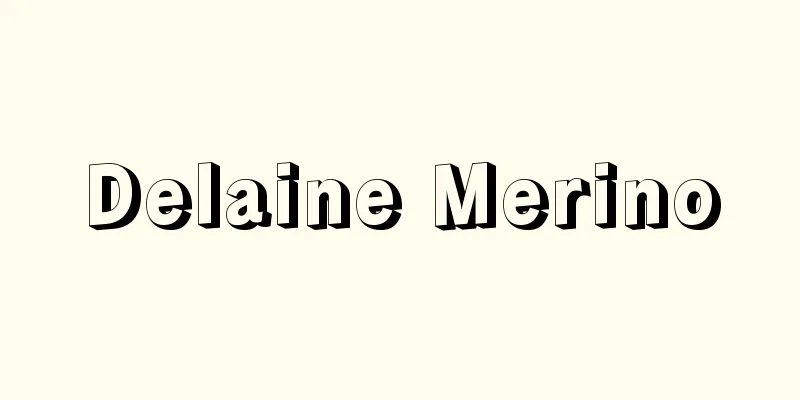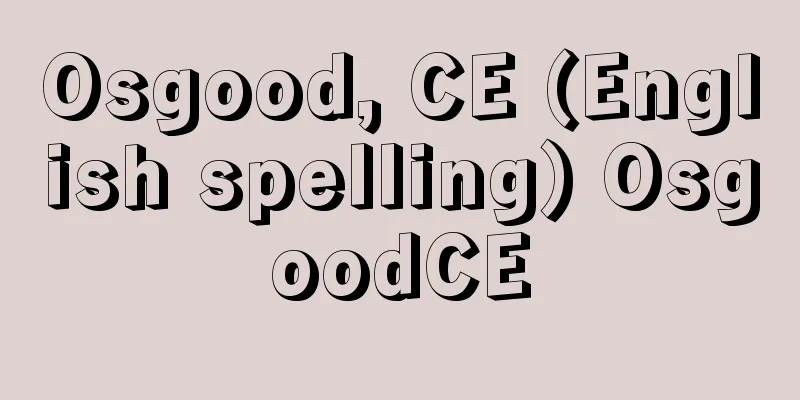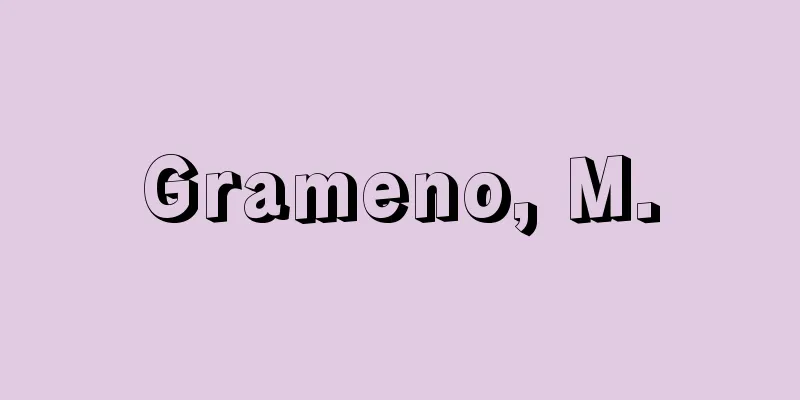Oxide - Oxide

|
It refers to a compound that contains only oxygen as a negative component. Therefore, compounds in which oxygen is a positive component, such as oxygen fluoride OF2 , or compounds in which oxygen is combined with other elements to form a negative component, such as oxoacid salts (e.g. Na2SO4 ), are not called oxides even if they contain oxygen. For example, water H2O , which is extremely common on Earth, is an oxide of hydrogen, silicon dioxide SiO2 , the main component of rocks , is an oxide of silicon, and iron oxide (III) Fe2O3 , a component of red rust, is an oxide of iron. [Nakahara Katsunori] Oxide ClassificationAmong oxides, those that react with acids to form salts are called basic oxides, those that react with bases to form salts are called acidic oxides, and those that react with both acids and bases to form their respective salts are called amphoteric oxides. For example, oxides of many nonmetallic elements (carbon dioxide CO 2 , sulfur dioxide SO 2 , etc.) and oxides of higher oxidation numbers of transition elements (chromium oxide (Ⅵ) CrO 3 , manganese oxide (Ⅶ) Mn 2 O 7 , etc.) are acidic oxides. CO2 + NaOH -> NaHCO3 In general, metal oxides are basic oxides and react as follows: K 2 O+H 2 SO 4 ―→K 2 SO 4 +H 2 O Oxides that do not react with acids or bases are called neutral oxides, such as water, carbon monoxide (CO), and nitric oxide (NO). Among oxides, those that contain the peroxide ion O 2 2- or -OO- as a negative component are called peroxides. Examples include hydrogen peroxide H 2 O 2 and sodium peroxide Na 2 O 2. Compounds that contain O 2- are called superoxides, such as KO 2 , potassium superoxide, and compounds that contain O 3- are called ozonides, such as KO 3 , potassium ozonide. [Nakahara Katsunori] [Reference] | | | |Source: Shogakukan Encyclopedia Nipponica About Encyclopedia Nipponica Information | Legend |
|
酸素のみを陰性成分として含む化合物をいう。したがって、フッ化酸素OF2のように酸素が陽性成分となっているものや、オキソ酸塩(たとえばNa2SO4)のように他の元素と複合して陰性成分となっているものは、酸素を含んでいても酸化物とはいわない。たとえば地球上にきわめて広く存在する水H2Oは水素の酸化物であり、岩石の主要成分の二酸化ケイ素SiO2はケイ素の酸化物、赤さびの成分である酸化鉄(Ⅲ)Fe2O3は鉄の酸化物である。 [中原勝儼] 酸化物の分類酸化物のうち、酸と反応して塩をつくる酸化物を塩基性酸化物といい、塩基と反応して塩をつくる酸化物を酸性酸化物、酸にも塩基にも反応してそれぞれの塩をつくるような酸化物を両性酸化物という。たとえば、多くの非金属元素の酸化物(二酸化炭素CO2、二酸化硫黄(いおう)SO2など)や、遷移元素の高酸化数酸化物(酸化クロム(Ⅵ)CrO3、酸化マンガン(Ⅶ)Mn2O7など)は酸性酸化物である。 CO2+NaOH―→NaHCO3 また一般に金属の酸化物は塩基性酸化物で、次のように反応する。 K2O+H2SO4―→K2SO4+H2O 酸、塩基と反応しない酸化物は中性酸化物ということがある。たとえば水、一酸化炭素CO、一酸化窒素NOなどがそうである。 酸化物のうち、陰性成分として過酸化物イオンO22-ないしは-O-O-を含むものを過酸化物といっている。たとえば過酸化水素H2O2、過酸化ナトリウムNa2O2などがそうである。またO2-を含む化合物は超酸化物、たとえばKO2は超酸化カリウムとよばれ、O3-を含む化合物はオゾン化物、たとえばKO3はオゾン化カリウムとよばれる。 [中原勝儼] [参照項目] | | | |出典 小学館 日本大百科全書(ニッポニカ)日本大百科全書(ニッポニカ)について 情報 | 凡例 |
>>: Arsenic oxide (arsenic oxide)
Recommend
Kobe
A city in the southeastern part of Hyogo Prefectur...
Armstrong, Lance
Born September 18, 1971 in Plano, Texas. American ...
Gabriel, Ange-Jacques
Born: October 23, 1698 in Paris [Died] January 4, ...
Black mulberry
...All of these are used in combination with othe...
Digitoxin
…The English physician William Withering, who lea...
Big boss politics - Ogosho Seiji
The former Shogun continues to hold real political...
Tinggian people - Tinggian people (English spelling)
A tribe that lives in the northwestern mountainous...
Persian Letters (English: Lettres persanes) French
An epistolary novel by Montesquieu, published in ...
Fukui earthquake
An earthquake occurred in the Fukui Plain at arou...
Turnaround worker - Orikaeshikou
…(4) Methods for preventing the collapse of the b...
Abe - Abe
...A place where Christian monks and nuns live to...
Minor - Minor
A person who has not yet reached the age of major...
Uchidanichirin starfish - Uchidanichirin starfish
...The closely related starfish S. borealis has s...
Crime of using, delivering, and importing counterfeit securities
...The crime of forging, altering, or making fals...
Kibitsu Shrine
[1] A shrine in Kibitsu, Okayama City. Formerly a ...









